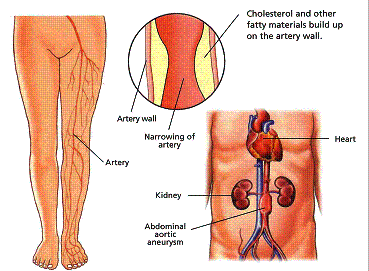In our ageing population, vascular disease is a common cause of disability and mortality. There are more and more people affected by vascular diseases. The good news is that the range of diagnostic tests and treatment is also widening.
Vascular disease or disease of the blood vessels can be categorised as:
- Those affecting the arteries (blood vessels carrying blood away from the heart)
- Those affecting the veins (blood vessels carrying blood to the heart)
Most of the diseases affecting the arteries are associated with atherosclerosis or thickening of the artery walls due to the deposit of fats. This may cause a blockage of the affected vessels resulting in a decreased blood supply to the organs or parts of the body that are supplied by these vessels.
Depending on which parts are affected, you may end up with:
- Intermittent claudication (where you get muscle pain on walking)
- Gangrene
- Stroke
- Kidney or other organ failure
- Aneurysm (weakening of the artery wall which can rupture and cause death)
- Diseases affecting the veins - These include:
- Varicose veins - These are dilated and engorged veins in the legs, which may lead to pain and ulcers in the legs, which cannot heal.
- Deep vein thrombosis - This is another common vascular disorder where blood clots form in the veins. If the blood clots break away and move to the lung, these clots may get stuck in the lung arteries and cause pulmonary embolism which is life threatening.

















